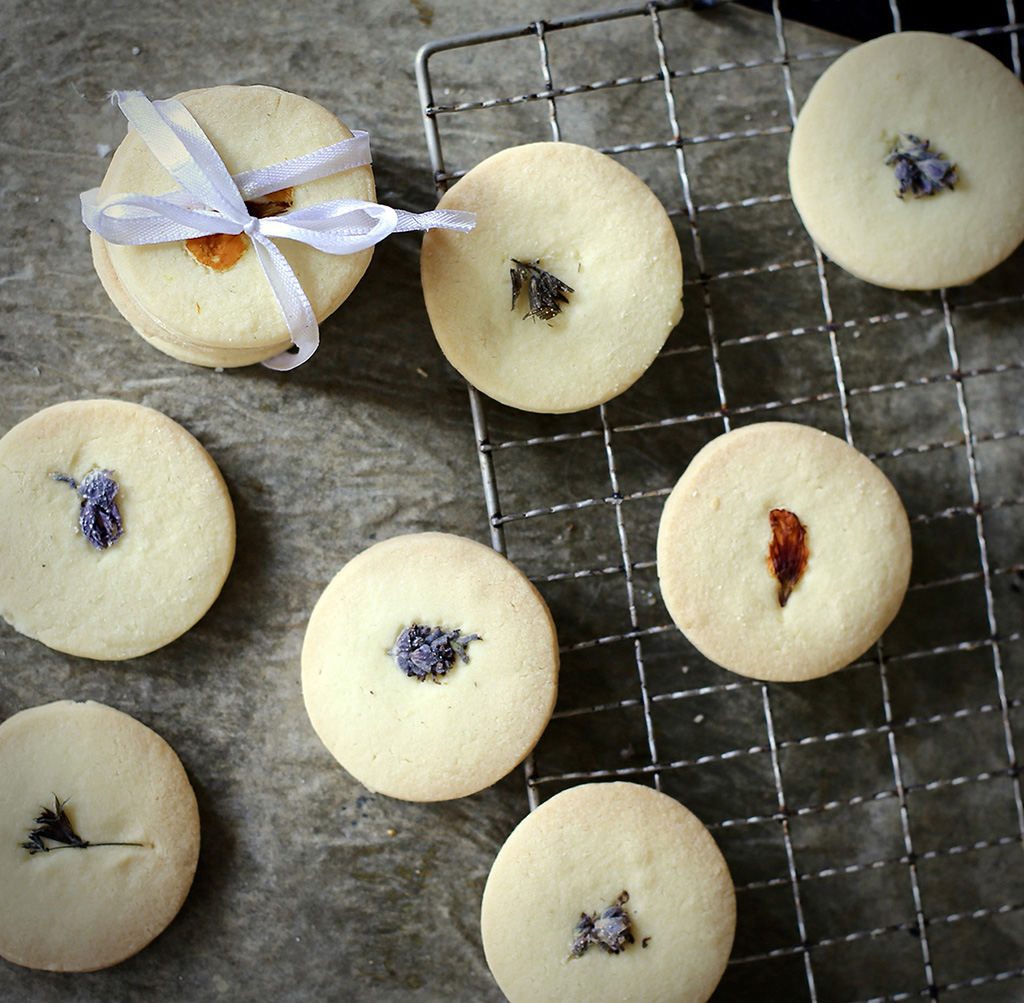
Easter is upon us once again.

I thought an Easter blessing basket would be a kind, giving tradition to start among my whanau. It could have items which represent you or your family, such as handmade jam or preserves, flowers fresh or dried, bread, cakes or biscuits.
You could add personal touches which have a connection between you and for the person you are giving to.
Wishing you a happy and safe Easter.
Be kind and caring towards one another and let’s be grateful for our wonderful life here in Aotearoa.

Homemade tea
DIY teas are such a delight to the senses and are the ultimate soothing and feel-good remedy. You can make your own favourite combinations with flowers, herbs, citrus, ginger and spices to create your personal blend.
Some delicious suggestions:
• Chamomile and ginger
• Lemon, lavender and chamomile
• Rose and ginseng
• Turmeric and spice
Peppermint, ginger and lemon
2 cups fresh mint leaves
2 lemons, skins only, use peeler
50g fresh ginger, thinly peeled
Method
Preheat the oven to 60degC.
Line a baking tray with baking paper.
Prepare the herbs by removing the leaves from the stalks and place on the baking tray. I found using a potato peeler gave me even thin slices which worked well for the lemons and ginger.
Scatter these evenly over the tray and dry in the oven for at least 2 hours or until completely dry.
Cool completely, break into small pieces, toss gently together. Divide into clean jars or bags, seal and label.
Directions per cup
1 Tbsp of dried homemade tea
1 cup freshly boiled water
Brew for 5 minutes before enjoying.

We are so fortunate to have friendly and kind neighbours who introduced themselves by leaving warm bread on our doorstep. As you can imagine, it has since created a great relationship with them and I thought this bread is the perfect loaf to be placed into our Easter blessing basket.
MAKES 2 LOAVES
210ml lukewarm water
1½ tsp instant yeast
2 Tbsp honey
2 eggs, plus 1 yolk
190ml neutral flavoured oil
1 tsp salt
3½-4 cups (600g) flour
Method
In a large bowl, add the lukewarm water, sprinkle over the yeast and stir to dissolve.
Add the honey, 1 egg and 1 egg yolk (keep remaining for glazing the bread).
Add the oil and salt.
Add 1 cup of the flour and begin mixing all the ingredients together (can be done in an electric mixer).
Continue adding flour and kneading until you get a smooth and elastic dough which is no longer sticky, (You may find you need all the flour or you may find you don’t).
Cover with a damp clean cloth and sit in a warm place until doubled in size (1½-2 hours).
Knock back the risen dough with your hands, and turn out on to a lightly floured bench.
Divide the dough into 2 even-sized portions.
Knead each portion of dough for 5 minutes, adding a dusting of flour if needed to prevent sticking.
Preheat the oven to 190degC
Divide each ball of dough into thirds and roll into long lengths (25cm-30cm long). Pinch the end of the three lengths together and form a plait. Secure the ends and place on to a baking sheet. Repeat with the other dough.
Allow to prove until well risen.
Beat the remaining egg lightly, brush gently over the bread. You can sprinkle the loaves with poppy seeds, sea salt, or sesame seeds.
Bake for 12-15 minutes or until the bread is golden and when tapped on the bottom it has a hollow sound.
Cool before eating.

Pork pies
Pork pies are such a British thing. I remember them fondly when having a picnic or if they are served on a ploughman’s platter. They are always eaten cold with a chutney or relish and I thought it fitting to add this to my basket of goodies.
There seems to be a lot of work involved, but once you have made one you will soon get the hang of it.
Give them a go as they are delicious and a wonderful gift.
1 onion, finely diced
1 apple, cored, grated with skin
1 Tbsp fresh tarragon or thyme leaves, finely chopped
50g blue cheese (optional), crumbled
2 Tbsp breadcrumbs
½ tsp salt
¼ tsp freshly ground black pepper
450g sausage meat
1 Tbsp sage leaves, finely chopped
½ tsp salt
¼ tsp ground pepper
Pinch freshly grated nutmeg
800g plain flour, plus extra for dusting
1½ tsp fine salt
320g lard
1 egg, beaten
Method

Flower shortbread
Shortbread is a tradition my mother created. Mum makes it for friends and family all through the year and I couldn’t think of a more cherished biscuit to share in our “blessing basket”. My mum also loves flowers and to add an extra special touch I have pressed edible flowers on to the biscuits.
250g softened butter
1 cup icing sugar
1 cup cornflour
1½-2 cups flour
Selection of edible flowers, nasturtiums, borage blossoms, lavender, thyme flowers, violas, pansy etc
Method
Preheat oven to 160degC.
Cream the butter and icing sugar until creamy and light.
Add the cornflour and 1 cup of the flour, mix gently to combine.
Turn out on to your workbench and gently bring the dough together. Add a little more flour if the dough is too sticky. (The trick is not to add too much or the dough cracks and becomes too dry when cooked).
Wrap the dough and chill in the fridge for 20 minutes.
Roll the dough on a lightly floured bench to 1cm thickness.
Cut into rounds or desired shapes. Press flowers on to the surface.
Bake in a preheated oven for 15-20 minutes or until firm, but not coloured at all. If you notice the biscuits are colouring up, turn the oven down a little.
Cool completely before packaging up.











